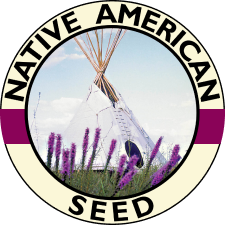This classically beautiful annual, or short-lived perennial displays iconic bright yellow petals surrounding a conical brown center with course haired stems and leaves. It grows to a height of one to three feet tall; blooms April to November, depending on your location and responds well to supplemental irrigation and good rains; Black-Eyed Susan will be lush. We have seen this wildflower blooming in part shade, and the blooms will last longer when shaded from the hot afternoon sun. Where Black-Eyed Susans are blooming in the fall they are a very important source of nectar to butterflies and dried seed heads are loved by graniverous birds. Black-Eyed Susan makes a lovely, long-lasting cut flower.
As with many composite flowers, Black-Eyed Susan makes a great landing pad for bees and butterflies. Small seed-eating birds will enjoy the dried seed heads well into fall. Indigenous cultures used the plant medicianally as a root tea for worms, colds and earaches or as an external wash for sores, snakebites and swelling. Black-Eyed Susan is the larval host for the Gorgone Checkerspot and the Bordered Patch Butterfly and is highly deer resistant.















